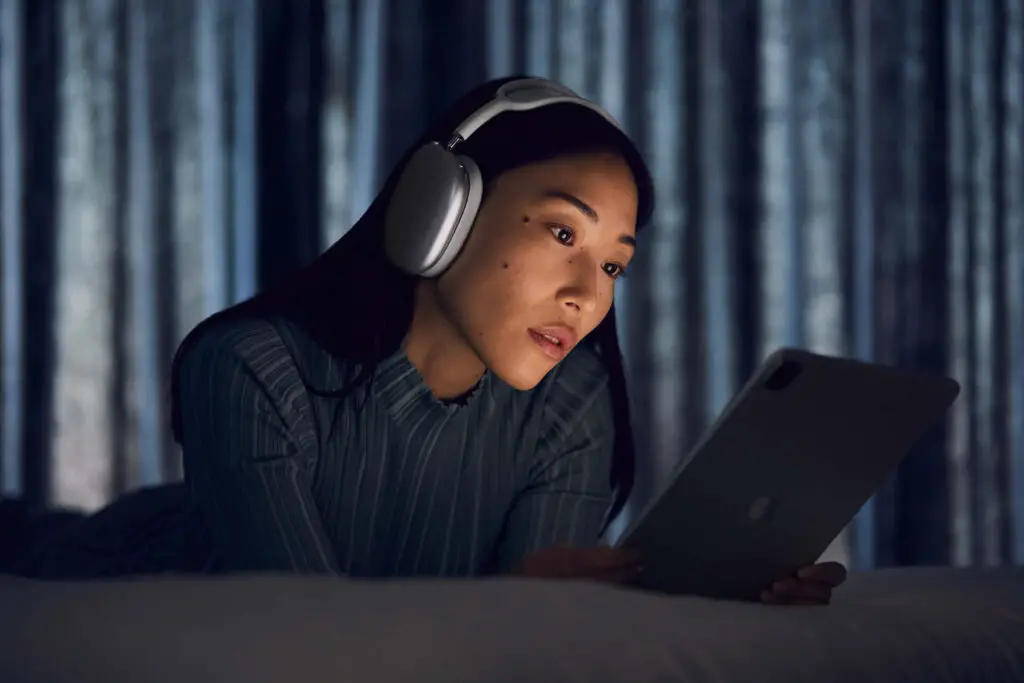
Mashed potatoes.
That’s what a lot of earbuds and headphones sound like compared to the Apple AirPods Max headphones I tested recently. I’ve spent many hours listening to my favorite bands, and there’s nothing quite like the audio fidelity you experience.
Let me start here: why the mashed potatoes sound? For lesser earbuds and headphones, there just isn’t enough oomph to keep up. I have incredibly eclectic tastes in music. I’ve always liked alt-country bands like Lord Huron and Blitzen Trapper, but I’m also okay with aggressive hard rock and bands like Iceage that tend to make headphones sound like mush.
For a few years, I reviewed audio products for Wired.com and tended to run through a battery of tests to see if the device had sonic abilities as I expected. I played the band Iceage, a goth artist named Chelsea Wolfe, songs by pop bands like Bleachers, and even went into the deep canon with Moby, U2, and Elvis Costello. What I was attempting to do during those years (and you can find them all online still by searching for Wired.com plus my name) is to test what I already experienced in the past with what I was experiencing now.
Growing up, I always had a high-fidelity stereo, something like floor-standing speakers, and a high-end amplifier. I know audio gear, but I also know the bands. I can hear the fine accoutrements in an Elvis Costello song because I wore out the vinyl album long ago. I know what to listen for in songs by Iceage and Moby, those intricate details you only notice when you have queued up the same song multiple times. As just one example among many, Chelsea Wolfe has a song called “Dragged Out” that makes most earbuds whimper. They go weak and sound flat and lifeless. They can’t recreate what the artist intended. Iceage has a song called Ecstasy off their second album that also makes even some high-end headphones panic.
I mention all of this because the AirPods Max flew through all of my tests and barely even noticed. Chelsea Wolfe drone rock? No problem. Every Iceage song I tested? Perfectly represented in pristine audio form. Apple does this because of the driver used to create the lush sonic experience. There’s something called an H1 headphone chip that can keep up with Iceage and many other artists without fudging or relying on booming bass to hide the poorly reanimated audio segments. Think of this like a Porsche with the engine horsepower to propel you forward and the suspension to make the right smooth and clean.
Other than the sonic abilities, there were quite a few other features I liked. It’s easy to use the Digital Crown to skip songs, adjust volume, and pause. It works similarly to the Apple Watch, so if you are already used to that, the AirPods Max will be a breeze to control. The headphones are also light and sturdy and never slipped on my head. I liked how easy they are to control my iPhone as well, adjusting the noise cancellation with a tap and enabling spatial audio (which works wonders for movies on an Apple iPad Pro).
Yet, it’s those many years of audio testing that really helped me the most. At $549, you are mostly purchasing these headphones because you want your music and movies to come alive. You want to viscerally feel the explosions in a Hollywood thriller, not just hear them. For all of the test songs I had, the AirPods Max passed with extreme clarity and sonic brilliance.
In fact, I will say something about these headphones I never say about products I’m testing. I actually think they could have charged more for them.
Apple likely decided the $549 price point is about as high as people will pay for any headphones, even though I’ve tested more expensive models that didn’t sound as clear.
If your goal is to listen to music the way the artist intended, and you know all of the subtle audio attributes of your favorite songs, these are your headphones.
